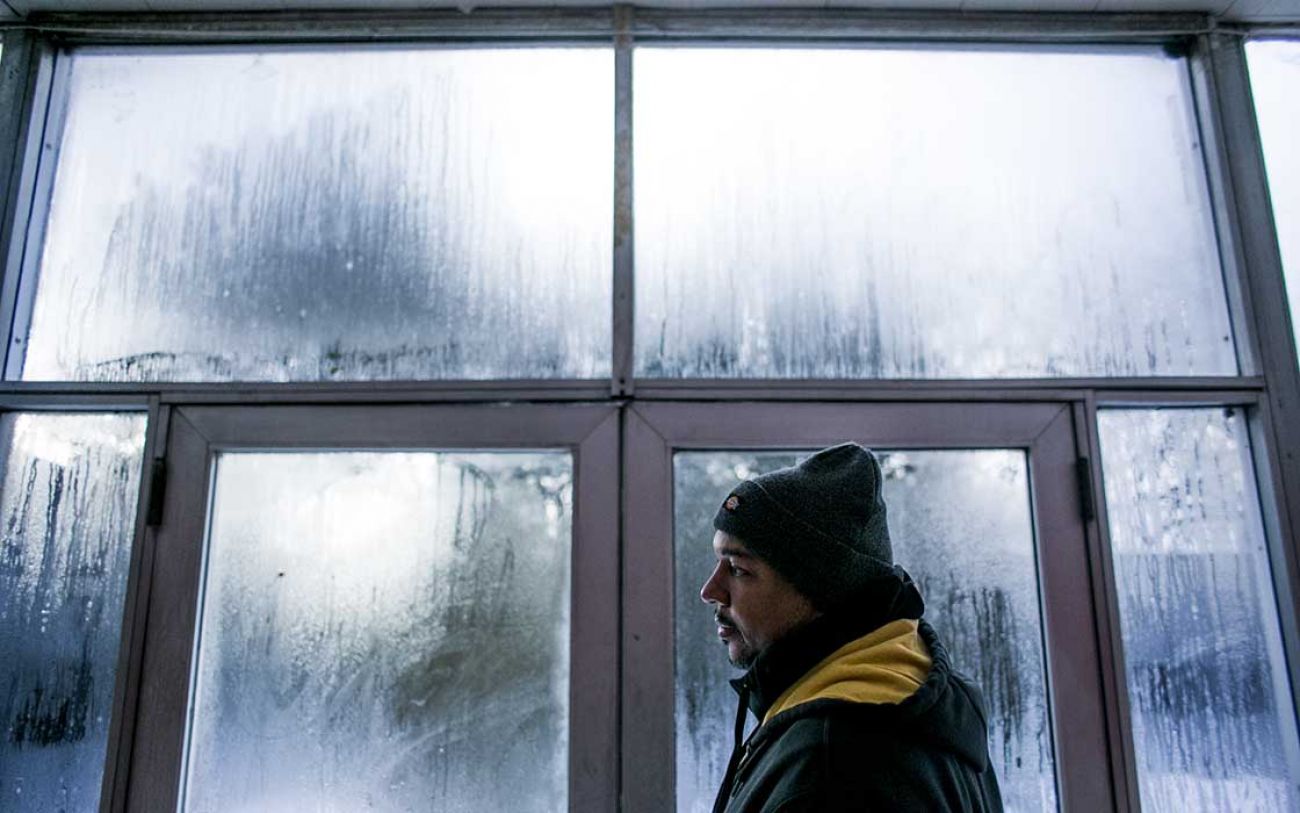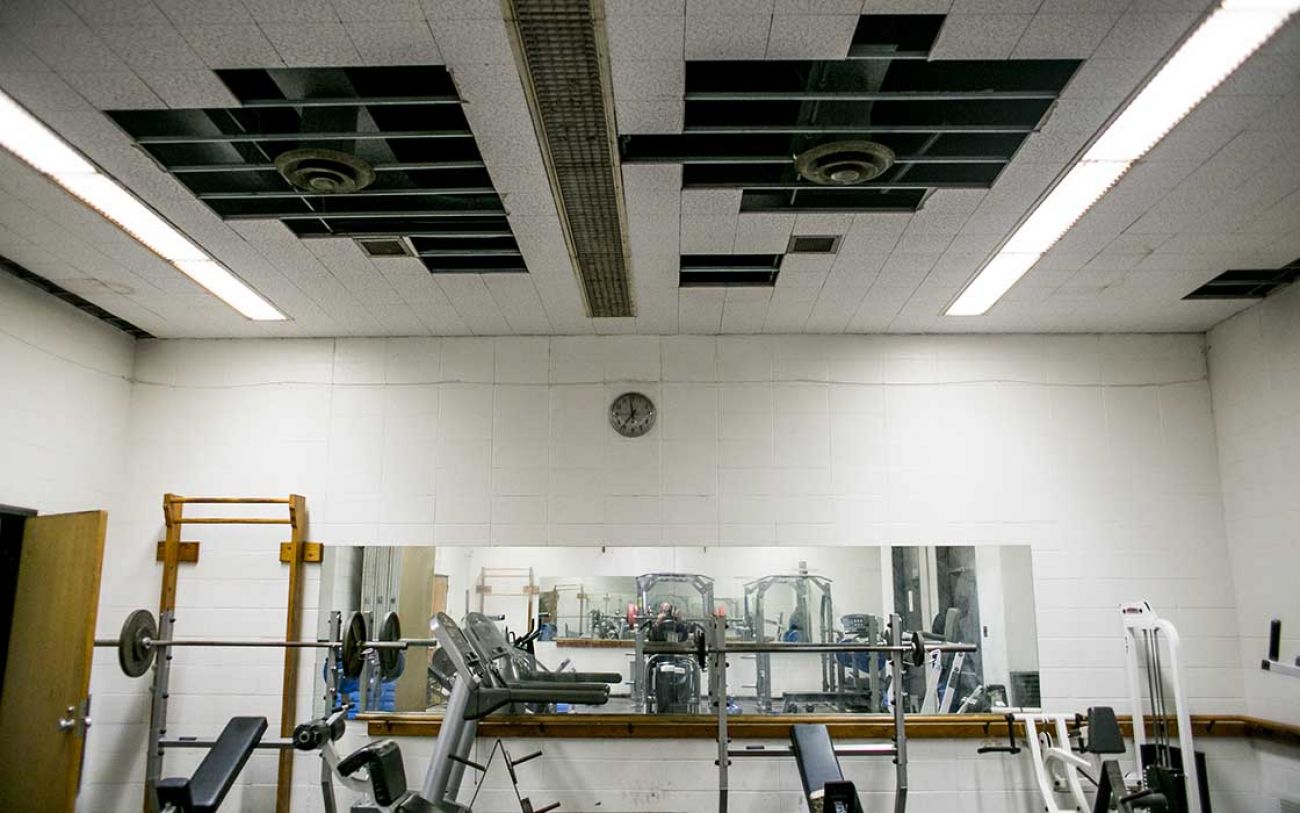Detroit’s decrepit schools could stall city comeback. Does Lansing care?

Pershing High School on Detroit’s east side is missing some basics such as sturdy bleachers, a dependable heating system and bathrooms that provide a basic human expectation of privacy.
Some of the stalls are missing doors.
The 90-year-old building needs $28 million in repairs, the highest tab among the 103 schools in the Detroit Public Schools Community District, according to a 2018 district facilities report.
“It makes me feel like they don’t really care about us,” said sophomore Anasia Dorris, 16. “Maybe other people’s city and county or whatever care about them, but not ours.”
Three miles away, Osborn High is not too much better. Drafty 62-year-old windows near the auditorium are fogged over in winter, and during physical education class kids have to dodge buckets placed around the gym to catch rainwater. Osborn’s long list of repairs adds up $14 million.
RELATED: See photos of Osborn High School in Detroit
The two schools aren’t alone: Detroit schools may require $1.4 billion in repairs in coming years. The looming crisis not only inconveniences children, teachers and staffers, but is also worries investors who say the condition of Detroit schools could hinder the city’s comeback, five years after emerging from bankruptcy.
This month, S&P Global Ratings upgraded the City of Detroit’s credit rating from B+ to BB-, three rungs below what’s considered investment grade or a “good” credit, according to Crain’s Detroit.
But analysts noted the schools are hurting the city.
“A major factor still holding back this progress continues to be the struggling state of the Detroit public school system,” S&P told investors.
Those remarks echo similar findings from Moody’s Investor Reports, which in November concluded the Detroit’s rebirth will be stalled until the state steps in to help fix the disrepair in the schools.
The district is at its limit for borrowing for major repairs, and a school-by-school facilities report last fall projected a $500 million maintenance shortfall will balloon to $1.4 billion by 2023.
Deteriorating schools contribute to blight, force residents to leave the city even as its population stabilizes following a 60-year decline, and put a crimp on tax revenues, Moody’s warned.
“The city may also struggle to attract new businesses, as decommissioned school buildings may contribute to urban blight that can discourage neighborhood improvement.”
The situation is so dire that even new buildings, such as the acclaimed Cass Technical High, need extensive repairs.
Built in 2004 for about $115 million, the school will need $46 million in repairs by 2023. The school’s football team, which has won three state titles, has a tattered field that can’t be used for practice. And its heating and cooling system broke down last summer.
The district’s audits don’t detail how a relatively new school could fall so quickly into disrepair, but records show the district overall has delayed maintenance for years to save money.
The state could take steps to help the schools and the city. But Moody’s analysts and others say it would a big ask from a Legislature that had to ante up $617 million just two years ago to eradicate a Detroit Public Schools deficit that built up when the district was operated for eight years by a string of five state-appointed emergency managers.
Mayor Mike Duggan is aware of the crisis, but isn’t saying much about how to fix it.
“The mayor recognizes the severity of the challenge,” Alexis Wiley, the mayor’s chief of staff, wrote in an email. “We’re committed to working with DPSCD and other partners to identify potential solutions.”
Nor does the problem rank high on the agenda in Lansing, where talk of how to “fix the damn roads” is paramount now.

Sen. Lana Theis, R-Brighton, the chair of the state Senate education committee did not respond to requests for comment from Bridge Magazine. Neither did Pamela Hornberger, R-Chesterfield Township, the chair for the House education committee chair.
Nikolai Vitti, the superintendent for DPSCD, said he hasn’t heard of any conversations among legislators about the issue, but he’s optimistic new governor, Gretchen Whitmer, a Democrat, would support policy changes or laws to help the district, such as increasing its borrowing threshold.
This spring, he intends to hold public conversations in the schools to help Detroit residents understand the crisis, to attract investments from philanthropy and encourage businesses to use their political clout to pressure Lansing.
“People don’t seem to have the political will” to fix the schools, he said. “There has to be a sense of civic responsibility for this.”
Gov. Gretchen Whitmer’s office did not respond to a request for comment.
How the state can fix it
In 2016, the state Legislature passed a law to rid the city’s schools of more than half a billion in debt that largely accumulated when the district was under state control from 1999 to 2005 and again from 2009 to 2016.
The new law created the Detroit Public Schools Community District, a debt-free entity that educates students, and left the old entity, Detroit Public Schools, holding the bonds. The old DPS exists solely to collect taxes and pay off debt. The last of the debt is set to be repaid in 2046, according to the Michigan Department of Treasury.
All that debt has put the city’s school system at the legal limit for state-backed borrowing. That means the state would have to pass a law to give DPSCD new borrowing capabilities to fund districtwide improvements.
But even that would be problematic for the future of the city of Detroit, said Craig Thiel, research director or the Lansing office of Citizens Research Council, a nonprofit, nonpartisan public policy research organization.
More borrowing would make tax bills go up. But in Detroit, a city that’s trying to attract new residents, property owners already pay a lot of taxes for debt, ranking in the top five in Michigan, Thiel said.
The overall tax rate in the city of 70 mills, one-third higher than nearby suburbs such as Grosse Pointe.
“Could the state pay for the debt service for (Detroit)? Technically, yes,” said Thiel. “But what’s to stop every other school district from asking for the same?”
Tonya Allen, CEO of the Skillman Foundation, and a leader in the effort to dig the schools out of deficit in 2016, said the debt was the state’s priority, not the facilities or positioning the district to be successful.
“Even though the Legislature gave us $617 million, we knew that was the bare minimum,” she said. “I think there’s a body of unfinished work that the Legislature is going to have to do.”
Moody’s concluded the same. Its fall report on Detroit stated:
“The district's ability to access the capital markets at affordable rates is also limited. While the City of Detroit's fiscal fortunes have improved, it is unlikely to offer meaningful assistance to DPSCD.
“The State of Michigan is therefore the most viable source of support for DPSCD's sizable capital needs, though political appetite so soon after the bailout is uncertain.”
$500 million and rising
Detroit’s schools need $500 million in fixes despite spending $2 billion since 1994 on construction, Vitti said. Voters approved a $1.5 billion bond in 1994 and another $500 million one in 2009 for school updates.
So how did the district get here?
The school system has lost 100,000 students since 2001 and is down to about 50,000 students, largely due to competition with charter schools and inner ring suburbs as well as the city’s population loss over that time. (In recent years, the annual declines in Detroit’s population have nearly stopped).
Declining enrollment drained funding and led to huge operating deficits. In response, maintenance employees were laid off, services were privatized and reduced and maintenance projects were put on the back burner, Vitti said.
And the problems piled up.
Today, about 57 percent of buildings as “good” or ”fair,” while 43 percent are in “poor” or “unsatisfactory” shape, the facilities report shows. By 2023, about 84 percent will be in bad shape.

A month ago you could see your breath if you walked into the auditorium at Osborn High on Detroit’s east side due to a heating system break down that was recently fixed.
And a few buckets are scattered around the gym to catch water to keep it from warping the floor. Again.
Duct tape holds some windows together in a special education room on the first floor. Only one window opens and it is typically kept open in the winter, hanging crooked off the hinge, to cool off the piping hot room.
“It’s a trick window. You’ve got to know the trick to how to close it,” said teacher Patricia Moore. “If it’s not open, it’s 500 degrees in here.”
It’s a constant struggle to keep the district’s buildings warm, said Mercedes Boulding, senior director of facilities for DPSCD.
Often, schools will be too hot in one section and too cold in others.
The average school is 60 years old. The most common problems districtwide are worn roofing and windows. When those fail, leaks causes additional problems with electrical systems, walls and floors, Boulding said.
The $500 million worth of maintenance problems within the Detroit school system are not only an annoyance, but sometimes a danger.
Last year, Palmer Park Preparatory Academy closed for the last three months of school after a leaky roof caused mold problems.
At Pershing, maintenance needs are expected to reach $43 million ivy 2023.
Jeremiah Aly, 16, a sophomore at Pershing, ticked off the countless deterioration issues that already exist inside the school from flooding, drafty windows and dingy floors to antiquated equipment that interferes with learning.
A person doesn’t need to go into the building to get an idea of how bad the facility is, he said, just take a look at the football field.
“Our field is terrible compared to every other field, our students had to make some of the bleachers by hand; they spray paint the lines on the ground instead of actually nurturing and taking care of it. It’s like they don’t really care about us for real,” he said.
Vitti echoed that sentiment. He said the neglect of the buildings reflects the harsh reality of how children in Detroit are treated.
“I often hear people say facilities don’t determine how well kids do in school. There’s some level of truth to that,” he said.
“But apply these same conditions to middle-class, white school districts and some of our schools would be completely unacceptable. It’s acceptable or ignored because we’re talking about poor children of color. I don’t have any facts to tell me otherwise.”
Maurice Cox, Detroit’s director of planning and development, said there are opportunities for the city and school district to increase collaboration and reuse empty buildings.
By year’s end, the city plans to complete a facilities audit of the 57 empty school buildings the district turned over to the city in 2014 exchange for forgiveness of $11 million in past due electricity bills, Cox said.
He said S&P and Moody’s were not wrong when they concluded that the condition of the schools will impact Detroit’s revitalization.
“It’s a fair observation,” he said.
See what new members are saying about why they donated to Bridge Michigan:
- “In order for this information to be accurate and unbiased it must be underwritten by its readers, not by special interests.” - Larry S.
- “Not many other media sources report on the topics Bridge does.” - Susan B.
- “Your journalism is outstanding and rare these days.” - Mark S.
If you want to ensure the future of nonpartisan, nonprofit Michigan journalism, please become a member today. You, too, will be asked why you donated and maybe we'll feature your quote next time!

